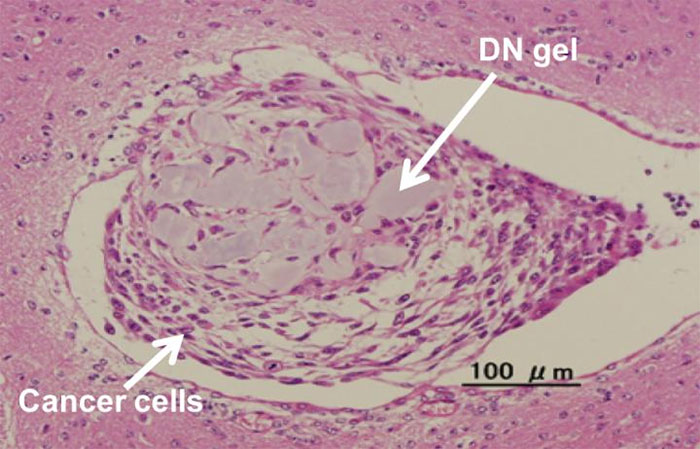New research: Turning cancer cells into stem cells, helping to make medicine
Scientists at Hokkaido University, Japan have developed a hydrogel capable of turning cancer cells back into cancer stem cells in 24 hours. This result opens up the opportunity to develop drugs that "kill the root" of cancer.
Cancer is the leading cause of death in the world with more than 8.6 million deaths each year. Although treatment methods are constantly improving, the 5-year survival rate of terminal patients is very low.

Japanese scientists created chemical DN gel to turn cancer cells back into stem cells - (Photo: JUN SUZUKA).
One of the reasons is because cancer tissues contain cancer stem cells that are resistant to chemotherapy and radiation. These stem cells can circulate in the blood and cause cancer metastasis. Scientists have long been aiming to attack cancer stem cells, but have encountered a number of obstacles.
" Cancer stem cells are a big target of anti-cancer drugs, but it is difficult to identify them because the number of stem cells is so small in cancer tissues. Understanding the molecular mechanism of cells is very difficult to identify. cancer root is essential to develop more effective cancer therapies," explains Professor Shinya Tanaka at Hokkaido University's medical faculty.
According to SciTechDaily , scientists at Hokkaido University and Japan's National Institute of Cancer have successfully developed a hydrogel that is able to "turn" cancer cells back into cancer stem cells in a short time. 24 hours with 6 types of cancer: brain, lung, uterus, colon, bladder and bone.
A new type of hydrogel called DN gel can rapidly reprogram differentiated cancer cells into stem cells. Thanks to this invention, scientists were able to overcome the problem of too few stem cells hiding in cancerous tissues. It opens the door to making cancer stem cell killers and "personalized" drugs .
The study results were reported in the scientific journal Nature Biomedical Engineering on March 29.
- Stem cells - hope to treat cancer
- Art of seduction of leukemia
- Turn stem cells into cancer machines
- Evidence of the existence of cancer stem cells
- 10 ways stem cells promote medical development
- What are stem cells? How advanced is medicine in this area?
- Successful treatment of blood cancer with stem cells
- America intends to cultivate stem cells in the universe
- Stem cells will be taken to the ISS station for observation
- Molecular detection helps extract stem cells for blood cancer treatment
- Transform human skin cells into brain cells
- New method to create human stem cells
 Why is Australia the country with the highest cancer rate in the world while Vietnam ranks 100th?
Why is Australia the country with the highest cancer rate in the world while Vietnam ranks 100th? New drug causes cancer to 'starve'
New drug causes cancer to 'starve' Common cancers in men
Common cancers in men America's incredible discovery: The most feared cancer cell is love
America's incredible discovery: The most feared cancer cell is love